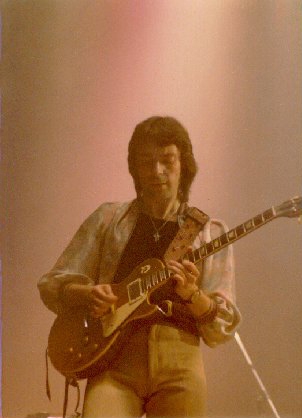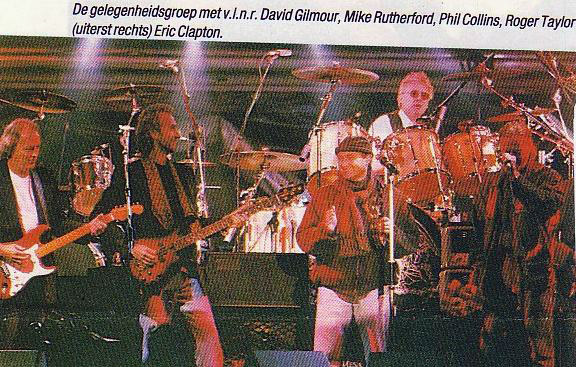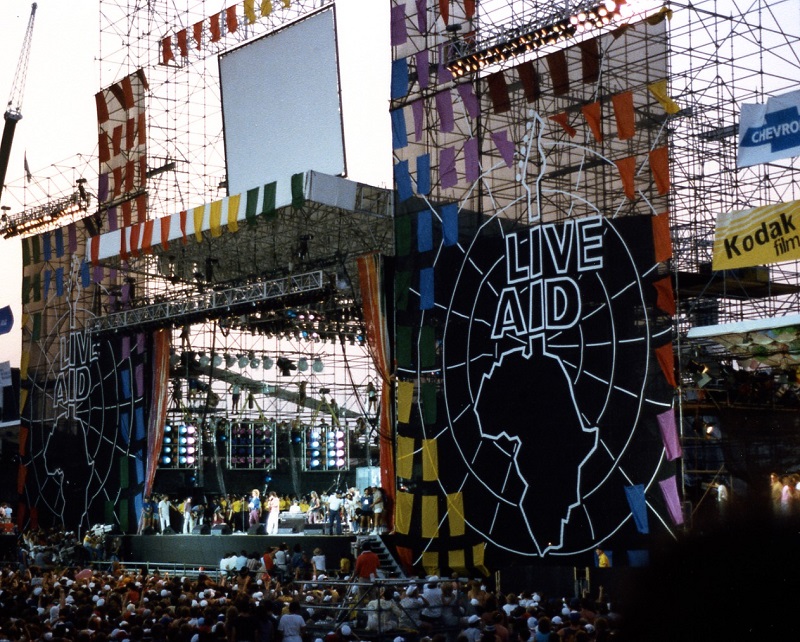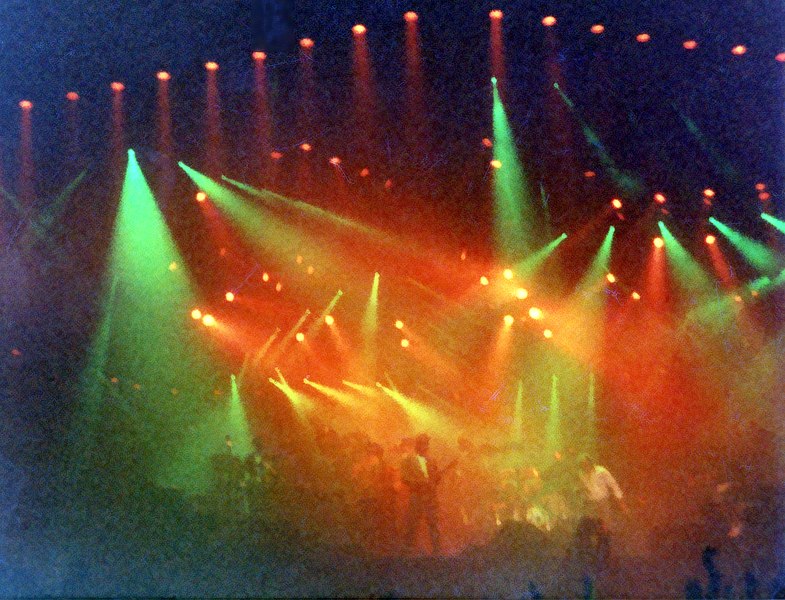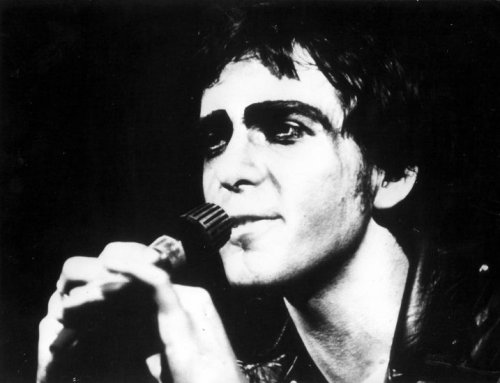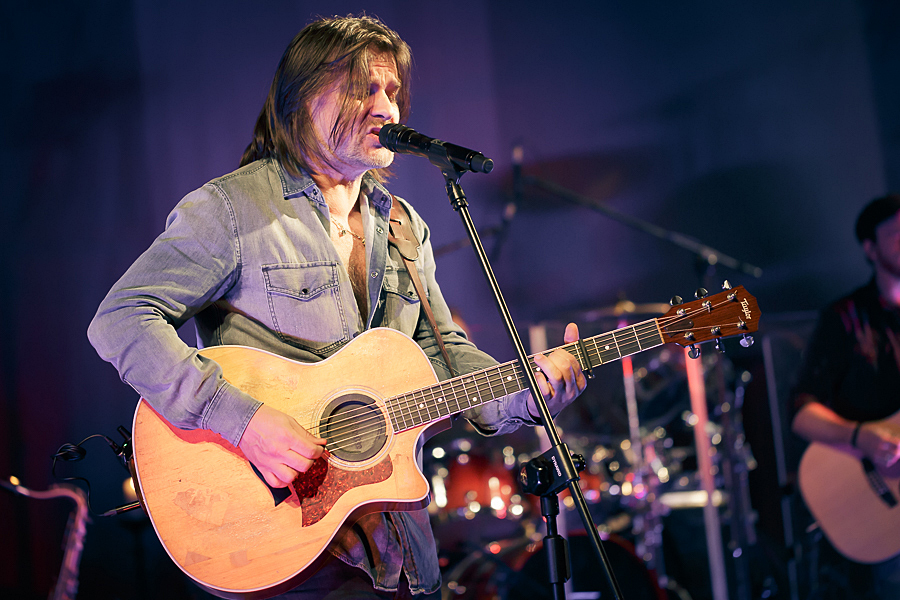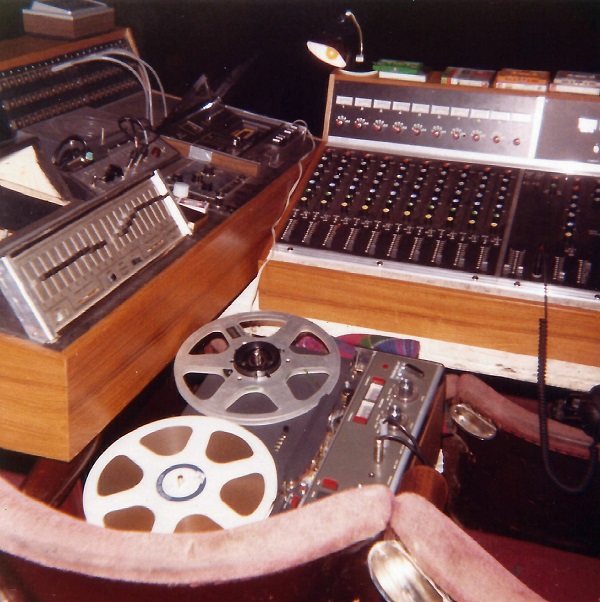On 8 October 1977, Genesis officially announced that guitarist Steve Hackett had left the band. His departure marked the second major loss in just two years, following Peter Gabriel’s exit in 1975, yet it also opened the door to a new chapter in the group’s history.
Continue reading “Steve Hackett Leaves Genesis – The End of an Era (8 October 1977)”Wind & Wuthering (1976) – Genesis
Released between December 1976 and January 1977, Wind & Wuthering marked the end of an era for Genesis. It was the last album to feature Steve Hackett before his departure, and it stands as one of the band’s most progressive works, balancing complex storytelling, instrumental prowess, and early hints of their later pop-oriented direction.
Continue reading “Wind & Wuthering (1976) – Genesis”The Lamb Lies Down on Broadway (1974) – Genesis
In June 1974, Genesis found themselves at a pivotal moment in their career. The band, having evolved through various phases, was now at the cusp of creating one of their most ambitious and transformative albums: The Lamb Lies Down on Broadway. Genesis had entered a new phase, both creatively and personally. The group decided to record in a new environment, seeking a place that would inspire their next sonic chapter. They chose Headley Grange, a decaying old eighteenth-century poorhouse in East Hampshire, previously inhabited by artists like Led Zeppelin and Bad Company. But when Genesis arrived, it was in a dilapidated state. The previous occupants had left behind quite a mess, and the house, with its eerie atmosphere, only added to the tension brewing within the band.
Continue reading “The Lamb Lies Down on Broadway (1974) – Genesis”Phil Collins’ Last Gig with Genesis at Cowdray Ruins, 18 September 1993
On 18 September 1993, Genesis gave what would turn out to be Phil Collins’ final live performance with the band: an understated charity concert at the historic Cowdray Ruins in Sussex.
Genesis in 1993
1993 was a relatively quiet year for Genesis. Following their massive We Can’t Dance tour in 1992, the members returned to their solo projects. For Phil Collins, it was a turbulent time. His marriage to his second wife, Jill, was breaking down under heavy tabloid scrutiny, and he poured much of that emotion into his solo album Both Sides. Dark, angry, and intensely personal, the album divided critics, something that weighed heavily on him.
Against this backdrop, Genesis regrouped briefly for a one-off charity concert at Cowdray Ruins. The show raised funds for the King Edward VII Hospice and featured an extraordinary lineup, including Pink Floyd and the surviving members of Queen.
A unique Genesis lineup
That night, Genesis appeared without their regular touring partners Chester Thompson and Daryl Stuermer. Instead, the drums were handled by Roger Taylor (Queen) and Gary Wallis (Mike + The Mechanics), while Tim Renwick (Pink Floyd, Mike + The Mechanics) filled in on guitar and bass.
Genesis performed a short set including “Turn It On Again,” “Hold On My Heart,” “I Can’t Dance,” and a “Tonight, Tonight, Tonight / Invisible Touch” medley. Some sources claim they also played Collins’ solo track “That’s Just the Way It Is,” though this remains doubtful.
Next, Pink Floyd took the stage, with Paul Young (Mike + The Mechanics) providing vocals on some numbers and Mike Rutherford stepping in on bass. Eric Clapton also performed a short set with Mike on bass, before the night ended with the “All Star Cowdray Ruins Band,” featuring nearly everyone involved, running through “Ain’t That Peculiar,” “Can I Get a Witness,” and “Gimme Some Lovin’.”
Low-quality recordings of the event survive on YouTube, but unfortunately no professional release exists, something of a shame, given its historical importance.
Phil’s reflections
Although successful, the concert was modest in scale. Few realized it marked the end of Collins’ 18-year run fronting Genesis. For Phil, the show highlighted his growing distance from the band:
“In the middle of my writing and making BOTH SIDES, Genesis did a concert with Queen. […] But I didn’t enjoy it … As I was singing these songs, it didn’t feel natural. Obviously, it was bad timing, going just like that from doing my most personal thing to a Genesis thing and back. But it definitely felt like ‘What am I doing here?’, like shoes that don’t fit anymore.“1
Though he wouldn’t announce his departure until 1996, the seeds had been sown that evening.
The Cowdray Ruins line-up (as listed in the program):
- Tony Banks – Genesis (keyboards)
- Eric Clapton – guitar
- Phil Collins – Genesis (vocals)
- John Deacon – Queen (bass)
- David Gilmour – Pink Floyd (guitar)
- Adrian Lee – Mike + The Mechanics (keyboards)
- Nick Mason – Pink Floyd (drums)
- Tim Renwick – Mike + The Mechanics / Pink Floyd (bass, guitar)
- Mike Rutherford – Genesis (guitar, bass)
- Roger Taylor – Queen (vocals, drums)
- Garry Wallis – drums
- Richard Wright – Pink Floyd (keyboards)
- Paul Young – Mike + The Mechanics (vocals)
Phil’s departure was still a few years away from being official. But looking back, Cowdray Ruins was the true closing chapter of his time with Genesis.
Sources
Hewitt, Alan (2000): Opening The Musical Box. London: Firefly Publishing.
Platts, Robin (2007): Genesis. Behind the lines, 1967-2007. Burlington, Ont., Canada: Collectors Guide Pub.
Thompson, Dave (2005): Turn it on again. Peter Gabriel, Phil Collins & Genesis. San Francisco: Backbeat Books.
- in Platts 2007: 140 ↩︎
Live Aid, July 13, 1985: Phil Collins Performs in Both London and Philadelphia
On July 13, 1985, Phil Collins made music history by doing something no one had ever done before (and likely hasn’t done since). He was the only performer to appear live at both Live Aid concerts, in London and Philadelphia, on the very same day.
Phil Collins: Everywhere at Once
By the mid-1980s, Phil Collins had become a global phenomenon. As both a solo artist and member of Genesis, he had racked up chart-topping albums, hit singles, and sold-out tours across the world. His third solo album, No Jacket Required, had taken 1985 by storm, dominating airwaves and topping the charts in multiple countries.
So it was only fitting that on July 13, 1985, a day described as “the greatest day in the history of pop music”, Phil Collins would also be everywhere — quite literally.
Making Rock History
Collins pulled off what seemed impossible: he performed live on global television from two different continents in a single day. And it was not for fame or headlines, it was for a cause. Live Aid, organized by Bob Geldof, aimed to raise funds for famine relief in Ethiopia. Like the Band Aid single “Do They Know It’s Christmas?” the year before, the event brought together some of the biggest names in music for one shared purpose.
While many artists participated, the day belonged to Phil Collins.
Live Aid: The Event
Live Aid was the natural successor to Band Aid. Geldof had rallied the stars once again, this time for two simultaneous mega-concerts, one at Wembley Stadium in London, the other at John F. Kennedy Stadium in Philadelphia. Almost every major pop and rock act of the 1980s took part.
Collins had previously played drums on the Band Aid single, but didn’t sing on it. His record label had advised him to hold off singing publicly, so as not to distract from the release of No Jacket Required and its upcoming tour. That changed with Live Aid.
July 13: A Day to Remember
Collins began his day at Wembley Stadium in London. In the early afternoon, under a blazing sun, he sat alone at the piano and performed “Against All Odds” and “In the Air Tonight”.
‘lt was blisteringly hot, the white stage. lt was so hot and l made a terrible mistake on ‘Against All Odds’ on the piano’, Phil later recalled. ‘l thought, ‘Oh God, what a good start for the day this is.”1
The bum note was heard not only by the 80,000 people at Wembley, but by over 1 billion viewers watching around the world.
He was then joined by his friend Sting for a duet of “Long Long Way to Go”, a track from No Jacket Required (Sting had sung backing vocals on the original), followed by a performance of “Every Breath You Take”.
From London to Philadelphia
Collins left Wembley, jumped on a Concorde, and flew across the Atlantic to perform at the Philadelphia show just a few hours later. He recreated his solo set and also played drums for both Eric Clapton and the reunited Led Zeppelin.
He arrived at JFK Stadium at around 7:00 p.m., asked Eric Clapton what they’d be playing, and by 7:30 p.m., he was onstage with him. Somewhere in between, he even found time to visit Robert Plant’s trailer for a quick chat before their Led Zeppelin set.
It was a whirlwind. But it perfectly captured the tireless energy of Phil Collins in the 1980s.
The Legacy
By 1985, Collins was already a global star. But performing at both Live Aid concerts catapulted him even further, cementing his status as a worldwide icon and consummate showman. His double appearance was not only a technical and logistical feat, but a powerful symbol of the unity and urgency behind Live Aid’s mission.
Live Aid: In Hindsight
While Live Aid is remembered for its good intentions, it’s also seen — in retrospect — as a bit of a cliché: wealthy Western musicians trying to “save” Africa with rock music. The lyrics of Do They Know It’s Christmas? have been criticized for their colonial tone and stereotypes. Still, the event did raise enormous funds and global awareness for the crisis in Ethiopia.
Phil Collins didn’t just participate in the day, he helped define the moment. His double appearance remains one of the most talked-about achievements of Live Aid, and one of the most iconic performances in rock history.
Title photo: Live Aid at JFK Stadium, Philadelphia, PA. Source: Wikimedia Commons, own work. Author: Squelle. / CC-BY-SA-2.5 (https://creativecommons.org/licenses/by/3.0).
- Phil Collins – A Life Less Ordinary (Documentary – 2002) ↩︎
The End of the Invisible Touch Tour – Wembley, July 4, 1987
On July 4, 1987, Genesis wrapped up their massive Invisible Touch tour with the fourth consecutive sold-out show at Wembley Stadium. It marked the end of a historic run for the band and a high point in their live career.
Invisible Touch: The Album
Released in 1986, Invisible Touch became Genesis’ most commercially successful album, reaching #1 in the UK and #3 in the US. It produced five major hit singles: ‘Invisible Touch’, ‘Tonight Tonight Tonight’, ‘Land of Confusion’, ‘In Too Deep’ and ‘Throwing It All Away’. Tracks like the title song, the moody Tonight, Tonight, Tonight, and Land of Confusion with its iconic Spitting Image video dominated radio, MTV, and the charts throughout 1986 and 1987. Genesis had never been more visible – or more popular.
Naturally, the band embarked on a massive world tour, playing across North America, Australia, Japan, Europe, and finally closing with four sold-out nights at Wembley, playing to nearly 300,000 people.
The Invisible Touch Tour
The tour kicked off in September 1986 in the US and included 112 shows, selling close to two million tickets. The band was joined, as usual, by drummer Chester Thompson and guitarist/bassist Daryl Stuermer.
In Australia and New Zealand, Genesis added a local four-piece string section for In Too Deep and Your Own Special Way, due to union regulations requiring them to employ local musicians.
By this point, Genesis weren’t just a hit-making machine, they were a finely-tuned live band, backed by a state-of-the-art Vari-Lite lighting system and a tight, polished setlist. While they had a vast catalogue to choose from, the shows leaned heavily on songs from Invisible Touch and recent albums.
The Setlist and Show Highlights
Every show opened with Mama, though its eerie atmosphere did not always translate well in daylight stadium settings. The closer was the now-iconic Turn It On Again medley, which featured a whirlwind of rock classics: Everybody Needs Somebody to Love, Satisfaction, Twist and Shout, Pinball Wizard, All Day and All of the Night and Karma Chameleon.
Older fan favorites included: Los Endos, Home By The Sea (with its now-standard ghost-story intro) and the In The Cage medley.
At the beginning of the tour, the In the Cage medley included In That Quiet Earth and the second half of Supper’s Ready. But as the tour progressed, Phil Collins began having trouble hitting some of the higher notes in Supper’s Ready, and the band eventually returned to the familiar In That Quiet Earth / Afterglow ending.
New material from Invisible Touch featured heavily, with standout performances of: Domino (with Phil’s now-legendary audience interaction), Tonight, Tonight, Tonight, Throwing It All Away (where the crowd singalong grew with each night) and Invisible Touch.
Live at Wembley Stadium
‘Nearly 300,000 people at Wembley. OK, there might have been a few repeats in there, but I thought at the time, and I still think now, that moment was the peak of our career’1 – Tony Banks.
By the time Genesis arrived at Wembley, the band had performed the set so often it had become a masterclass in musicianship and stagecraft. Initially, only two nights at Wembley were planned, but due to overwhelming demand, two more were added, making Genesis the first band to play four sold-out shows at Wembley Stadium. They entered the Guinness Book of Records, a record later broken by Michael Jackson during his Bad tour in 1988.
The Wembley concerts were filmed and later released on VHS and DVD (2003). Unfortunately, the epic In the Cage medley did not make it into the final release, (allegedly) due to bad luck with tape changes during that very song on each night.
Even so, the performance captured at Wembley is phenomenal, showcasing Genesis at their live peak. With Invisible Touch, the band had reached global superstardom and Wembley was the victory lap.
After this triumph, fans would have to wait four more years for the next Genesis studio album.
Title photo: Genesis Nancy 1987. Phil Collins, Tony Banks, Mike Rutherford, Daryl Stuermer, Chester Thompson. Genesis en concert à Nancy le 14 juin 1987 au stade Marcel-Picot de Nancy-Tomblaine Source: Wikimedia Commons, Fredamas / CC-BY-SA-2.5 (https://creativecommons.org/licenses/by/3.0).
- in Banks, Tony; Collins, Phil; Gabriel, Peter; Hackett, Steve; Rutherford, Mike; Dodd, Philip, Genesis. Chapter & verse. (New York: Thomas Dunne Books/St. Martin’s Griffin, 2007), p. 287. ↩︎
Steve Hackett’s Last Show with Genesis
On July 3, 1977, Genesis played the final show of their Wind & Wuthering tour, unaware that it would also be Steve Hackett’s last performance with the band.
Wind & Wuthering and Growing Tensions
Released in December 1976, Wind & Wuthering was Genesis’s second album following Peter Gabriel’s departure. With Phil Collins now stepping confidently into the role of lead vocalist, the band had successfully reinvented itself as a four-piece. Collins had already proven he could carry the frontman role with A Trick of the Tail and the subsequent 1976 tour.
By this point, songwriting duties were largely shared between Tony Banks and Mike Rutherford, while Phil focused more on arrangements and performance. Steve Hackett, however, was growing increasingly frustrated. He felt that his musical ideas were often overlooked, and after the 1977 tour, he made the decision to leave Genesis.
The Wind & Wuthering Tour
The 1977 tour was one of Genesis’s biggest yet, taking them across Europe, the US, and for the first time, South America. They were joined by American drummer Chester Thompson, who would become a fixture in the live lineup for decades.
That year, the band reached new heights in live performance and was even voted “Best Live Group” in 1977. Much of that era’s power was captured on the double live album Seconds Out.
The Final Show: July 3, 1977, Munich
Genesis closed out the tour with a concert at Munich’s Olympiahalle. They opened with Squonk, followed by One for the Vine, a Tony Banks epic from the new album. The rare track Inside and Out from the Spot the Pigeon EP was also included, having appeared on select European dates.
Highlights of the show included The Carpet Crawlers, I Know What I Like, and Supper’s Ready, songs that had evolved significantly since Gabriel’s departure. The band had also begun experimenting with medleys, a trend that continued on this tour: Dance on a Volcano merged seamlessly into Los Endos, while The Lamb Lies Down on Broadway was paired with the climactic ending of The Musical Box.
And of course, Firth of Fifth made the setlist, featuring Hackett’s iconic guitar solo. None of the fans, or even the band members, knew it would be the last time they’d see Steve Hackett perform it live with Genesis.
Steve Hackett’s Departure
Steve had already released a solo album by this point, showcasing ideas that had not made it onto Genesis records. During the four-piece era, he had pushed for a guaranteed portion of writing credits on each album, a request the others declined, committed as they were to being a fully democratic group.
In July 1977, while mixing Seconds Out, Hackett found himself exhausted by the constant repetition of songs like I Know What I Like. After months on the road and in front of crowds of 20,000 people, he began to feel creatively stifled. The challenge was gone.
So one day, he picked up the phone and called Mike Rutherford to say he was leaving. Mike, aware of Steve’s growing dissatisfaction, did not try to change his mind.
Shortly afterward, Phil Collins happened to drive past Steve near Trident Studios, where they were mixing the album. Phil invited him into the car, but Steve acted strangely, saying only, “Talk to Mike, he’ll explain,” before walking away. When Phil arrived at the studio, Mike and Tony told him Steve had officially left the band.
The Band Carries On
Genesis continued mixing Seconds Out as a trio, then returned to the studio to begin work on their next album. From this point forward, Genesis would remain a three-piece studio band, while Steve Hackett would embark on a successful solo career.
Title photo: Genesis Steve Hackett. Source: Wikimedia Commons, Jean-Luc / CC-BY-SA-2.5 (https://creativecommons.org/licenses/by/3.0). Originally posted to Flickr as Genesis.
The Last Show of “The Lamb” Tour – and Peter Gabriel’s Final Genesis Gig
On May 22, 1975, Genesis played the final show of their ambitious The Lamb Lies Down on Broadway tour. It would also mark the last time Peter Gabriel performed with the band as lead vocalist.
The Lamb Lies Down On Broadway: A Bold New Chapter
In 1974, Genesis entered the studio to record their most ambitious project yet: The Lamb Lies Down on Broadway. The double concept album told a surreal and complex story by Peter Gabriel, following a Puerto Rican teenager named Rael as he journeys through a strange underworld beneath New York City.
The urban American setting was a dramatic shift from the band’s earlier tales rooted in British folklore and fantasy. After touring North America, Genesis were aiming to break into the U.S. market. The Lamb was also their first true concept album (after an unsuccessful attempt on their debut), a hallmark of many progressive rock bands at the time.
Internally, however, tensions were mounting. Gabriel wrote all the lyrics and developed the story independently, while Tony Banks, Mike Rutherford, and Phil Collins composed most of the music during jam sessions at Headley Grange. Steve Hackett’s contributions were minimal, and the creative disconnect between words and music created friction. Only one track, “The Light Dies Down on Broadway”, had lyrics penned by Banks and Rutherford instead of Gabriel.
Behind-the-Scenes Tensions
Two key factors contributed to Gabriel’s growing estrangement from the band. First, he had attracted interest from The Exorcist director William Friedkin, who was keen to collaborate on a film. Gabriel was tempted, even considering leaving the band, but the project never materialized.
Second, Gabriel’s wife Jill gave birth to their first daughter, Anna, in July 1974. Complications following the birth drew Gabriel further away from the group. He was the first member to start a family, and this life change made him reassess his priorities and see a future beyond the band. His inner conflict bled into The Lamb‘s narrative, for example in the song “In the Cage,” where Rael cries, “Get me out of this cage!”
Upon release, The Lamb Lies Down on Broadway received mixed reviews and was commercially underwhelming. Ticket sales for the tour were below expectations, and several shows were cancelled. Though the album is now revered as a cult classic, its reception at the time was disappointing, particularly for Gabriel, who had poured his heart into the concept.
A Tour Like No Other
The band made the bold decision to perform the album in full on tour, even before many fans had a chance to hear it. Gabriel, already known for his theatrical costumes, pushed the visual spectacle even further, but it came at a cost. His elaborate outfits, including the infamous “Slipperman” costume, sometimes muffled his vocals or distracted from the music itself. The rest of the band grew frustrated, feeling the show had become more about theatrics than sound.
Technical problems were frequent. The stage used projected slides to accompany the story, but they often jammed or displayed out of sequence. In one infamous incident, a Peter Gabriel dummy meant to mirror him on stage was mysteriously swapped for a naked roadie. And during a song that required a small explosion, the production manager accidentally triggered a huge blast so loud that the band stopped mid-song. Peeking through the curtain, the crew member sheepishly said, “Sorry,” to which Phil Collins yelled, “You’re fired!”
Gabriel’s Departure
Midway through the tour, Gabriel made the decision to leave Genesis. Their manager Tony Smith was not surprised, but asked him to finish the remaining dates before making it public.
Gabriel’s final show with Genesis took place in Saint-Étienne, France, in May 1975. Ironically, it wasn’t meant to be the last show, but the scheduled final concert was canceled at the last minute. And so, without much fanfare, Peter Gabriel’s time with Genesis came to an end.
He had co-founded the band in 1967 alongside Tony Banks, Mike Rutherford, and Anthony Phillips. His departure, announced later that year, shocked fans and cast doubt over the band’s future. Could Genesis survive without their charismatic frontman?
As history would show — they could. And so could he.
Photo: Peter Gabriel in 1975. Photographer unknown. https://commons.wikimedia.org/wiki/File: Peter_Gabriel,_April_1975.jpg. Unknown author / CC0 (https://creativecommons.org/licenses/by/3.0).
Ray Wilson Announced as New Genesis Frontman
On June 6, 1997, Tony Banks and Mike Rutherford announced the new lead singer of Genesis following Phil Collins’ departure: 28-year-old Ray Wilson.
When Phil Collins revealed in March 1996 that he would be leaving Genesis after 25 years, fans were eager to learn who would step into his shoes. Genesis had already weathered the departure of their original frontman, Peter Gabriel, back in 1975. Now, two decades later, Tony Banks (keyboards) and Mike Rutherford (guitars), the remaining founding members, were determined to carry on once more.
They began writing and recording new material, searching for a vocalist who could help them shape the band’s next chapter. Rumors swirled in the music press, speculating about possible replacements. Then, on June 6, 1997, it was official: Ray Wilson would be the new voice of Genesis.
Who is Ray Wilson?
Born in Dumfries, Scotland, on September 8, 1968, Ray had previously fronted the band Guaranteed Pure and was best known for his work with Stiltskin, whose hit single “Inside” reached number one in 1994, thanks in part to its use in a Levi’s commercial. So, while Ray wasn’t an unknown figure in music, the stylistic gap between Stiltskin and Genesis left both his fans and Genesis fans surprised and cautious.
Reflecting on the moment in the Songbook DVD, Ray recalled:
‘I was in my little studio writing songs. It was ten in the morning, I was making a coffee, and Tony Smith, the manager of Genesis, was on the phone: ‘Would you like to come and audition to replace Phil Collins?”
By then, Phil Collins’ massive solo success had blurred the public’s perception of Genesis. It was often seen as “Phil Collins and his band”. Taking over that role and shifting that image would be no easy task.
Calling All Stations
Ray joined Tony and Mike at The Farm, Genesis’ private studio in Surrey, to begin recording what would become Calling All Stations. Most of the songs had already been written by Banks and Rutherford, but Ray contributed several ideas of his own. The result was a darker, more melancholic record. The vibrant energy and accessible pop sensibility Phil had brought to the group were now absent, and with it, part of the familiar Genesis chemistry.
Still, Ray’s emotionally rich vocals suited the mood of the new material. His voice, more reminiscent of Peter Gabriel than Phil Collins, blended well with the brooding tone of the songs. Calling All Stations, like its predecessor We Can’t Dance, was produced by Nick Davis.
Three singles were released from the album: “Congo”, “Shipwrecked”, and “Not About Us”. Ray co-wrote the latter, along with “Small Talk” and “There Must Be Some Other Way.” Drums on the record were provided by Israeli session musician Nir Zidkyahu and Nick D’Virgilio from American prog-rock band Spock’s Beard.
Despite Ray’s strong performance, critics were less than kind. NME wrote dismissively that “the world doesn’t care enough about Genesis to make the effort” and claimed people had “forgotten why they were once any good.” Q magazine criticized the album for offering “just darkness, confusion, individual isolation,” calling it “one-paced and one-dimensional.”
Live in 1998: Ray on Tour
On tour, however, Ray proved his versatility. The setlist spanned the entire Genesis catalog from the pop-era hits like “Invisible Touch”, “No Son Of Mine”, and an acoustic version of “Follow You Follow Me”, to later epics such as “Home by the Sea”, and even classic Gabriel-era tracks like “Carpet Crawlers” and “The Lamb Lies Down on Broadway.” New material from Calling All Stations also held up well live. Some songs, like the title track, even sounded better on stage.
Ray, Mike, and Tony were joined on tour by Nir Zidkyahu on drums and Anthony Drennan on guitar and bass, effectively filling the shoes of Chester Thompson and Daryl Stuermer.
Commercial Struggles
Despite reaching No. 2 in the UK, Calling All Stations underperformed in the U.S., peaking at just No. 54. Ticket sales also fell short of expectations. As a result, the production and scale of the tour were scaled back and the planned American leg was cancelled entirely.
After the 1998 tour, Tony Banks and Mike Rutherford decided to put Genesis on indefinite hold.
Looking Back
Although this wasn’t the end of Genesis, in 1998 it certainly felt like it. And sadly, Ray Wilson, thrust into a difficult situation, was unfairly blamed by some critics and fans for the band’s lack of commercial success during this era.
But this criticism doesn’t hold up. Ray brought a unique voice and delivered both the new material and the classics whether originally sung by Peter Gabriel or Phil Collins with emotion and distinction.
Following the end of Genesis, Ray took time to regroup before launching a solo career. He has since released several solo albums and continues to perform live, often including Genesis songs in his setlists.
Title photo: Ray Wilson live in Dortmund in 2017 (Photo: André Wilms of ‘The Photography Of Mister Ilms)‘.
Live at the Roundhouse 1970
On March 11, 1970, Genesis played one of the most significant gigs of their early career at the Atomic Sunrise Festival at London’s legendary Roundhouse. The event, sponsored by Yoko Ono, featured artists such as David Bowie and Hawkwind. Just weeks later, Genesis signed their first major record deal with Charisma Records.
Genesis in Early 1970
At the start of 1970, Genesis were busy writing and rehearsing new material for their second album. Their debut album had failed to chart, and they had parted ways with producer Jonathan King and Decca Records. Determined to take a new direction, the band moved away from the pop-oriented style of their first record and embraced a more adventurous, experimental sound. At the time, Genesis consisted of: Peter Gabriel (vocals), Tony Banks (keyboards), Ant Phillips (lead guitar), Mike Rutherford (guitar and bass) and John Mayhew (drums).
Opening for David Bowie at the Roundhouse
Still an unknown band, Genesis saw the Atomic Sunrise Festival as a huge opportunity – especially since they were set to open for David Bowie.
Both Tony Banks and Peter Gabriel were big Bowie fans. Space Oddity had been released the previous year, and Bowie was already a rising star. His live shows at the time were highly theatrical, something that fascinated Gabriel. A few years later, Genesis would gain recognition for their elaborate stage performances, partly inspired by Bowie’s dramatic approach.
However, not everyone in the band was equally enthusiastic. While Gabriel was impressed by Bowie’s visuals, Banks felt that the theatrical elements took too much attention away from the music. This difference in perspective would later lead to tensions within Genesis, especially as Gabriel began incorporating costumes and masks into their own performances – something that divided opinions among the band.
The Atomic Sunrise Festival and Yoko Ono’s Involvement
At the Atomic Sunrise Festival, Genesis performed songs that would later appear on their second album, Trespass, including “Looking for Someone” and “The Knife” – both of which were captured in surviving video footage. It is also believed that they played “Twilight Alehouse”. In later interviews, Ant Phillips joked that this footage is the only visual proof that he ever performed with Genesis.
Despite the significance of the gig, the band’s experience was not entirely positive. Gabriel recalled that there were more people on stage than in the audience, and Phillips was so nervous that he could barely play – a stage fright that would later contribute to his decision to leave Genesis.
Still, both Banks and Phillips were impressed by the professionalism behind the scenes. Every performance at the festival was recorded on 8-track equipment, and parts of it were filmed. Since the event was backed by Yoko Ono, there’s a possibility that the full footage still exists somewhere in the Apple Records archives.
A few weeks after the show, Genesis signed with Charisma Records, and by the end of the year, they released Trespass. But changes were already on the horizon – Ant Phillips left the band, and a new drummer joined in the summer of 1970… but that’s a story for another time.
Title photo: Genesis mixing desk 2 – Revox A77 and associated gear for Genesis at a concert in the Liverpool Empire, 1970s, precise year unknown. Source: Wikimedia Commons, Rodhullandemu / CC-BY-SA-2.5 (https://creativecommons.org/licenses/by/3.0).

